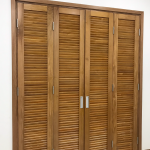Also using factories one encode pattern coordinating heuristics, we can as well as produce labeling services you to definitely distantly keep track of study issues. Right here, we will weight in the a summary of identin the event that theied mate pairs and check to find out if the pair out-of persons in an applicant fits one.
DBpedia: Our database out-of recognized spouses arises from DBpedia, that is a community-passionate funding like Wikipedia however for curating prepared investigation. We’ll have fun with an excellent preprocessed snapshot as our very own studies feet for everyone labels setting advancement.
We can see some of the example entries off DBPedia and make use of all of them in the a simple distant supervision brands setting.
with unlock("data/dbpedia.pkl", "rb") as f: known_partners = pickle.load(f) list(known_spouses)[0:5] [('Evelyn Keyes', 'John Huston'), ('George Osmond', 'Olive Osmond'), ('Moira Shearer', 'Sir Ludovic Kennedy'), ('Ava Moore', 'Matthew McNamara'), ('Claire Baker', 'Richard Baker')] labeling_setting(information=dict(known_partners=known_partners), pre=[get_person_text message]) def lf_distant_supervision(x, known_partners): p1, p2 = x.person_labels if (p1, p2) in known_spouses or (p2, p1) in known_partners: come back Positive more: return Abstain from preprocessors transfer last_title # Last label sets to own understood partners last_brands = set( [ (last_label(x), last_identity(y)) for x, y in known_spouses if last_title(x) and last_title(y) ] ) labeling_form(resources=dict(last_brands=last_names), pre=[get_person_last_brands]) def lf_distant_supervision_last_labels(x, last_labels): p1_ln, p2_ln = x.person_lastnames return ( Self-confident if (p1_ln != p2_ln) and ((p1_ln, p2_ln) in last_labels or (p2_ln, p1_ln) in last_names) else Refrain ) Incorporate Brands Features on Analysis
from snorkel.labels import PandasLFApplier lfs = [ lf_husband_partner, lf_husband_wife_left_windows, lf_same_last_label, lf_ilial_relationships, lf_family_left_windows, lf_other_dating, lf_distant_supervision, lf_distant_supervision_last_labels, ] applier = PandasLFApplier(lfs) from snorkel.labels import LFAnalysis L_dev = applier.pertain(df_dev) L_show = applier.apply(df_instruct) LFAnalysis(L_dev, lfs).lf_realization(Y_dev) Education the Term Design
Today, we’ll teach a style of the brand new LFs to help you estimate its weights and you can combine the outputs. While the design was coached, we can blend the fresh outputs of one’s LFs into the one, noise-aware training term in for all of our extractor.
from snorkel.labeling.model import LabelModel label_design = LabelModel(cardinality=2, verbose=Genuine) label_model.fit(L_train, Y_dev, n_epochs=five-hundred0, log_freq=500, seed products=12345) Title Design Metrics
Just like the our dataset is extremely unbalanced (91% of your brands are negative), even an insignificant baseline that usually outputs negative get an effective large reliability Svenska kvinnlig. So we evaluate the term design by using the F1 get and ROC-AUC in lieu of accuracy.
from snorkel.research import metric_rating from snorkel.utils import probs_to_preds probs_dev = label_model.anticipate_proba(L_dev) preds_dev = probs_to_preds(probs_dev) printing( f"Title design f1 score: metric_score(Y_dev, preds_dev, probs=probs_dev, metric='f1')>" ) print( f"Term model roc-auc: metric_rating(Y_dev, preds_dev, probs=probs_dev, metric='roc_auc')>" ) Term design f1 score: 0.42332613390928725 Label model roc-auc: 0.7430309845579229 Within this last area of the training, we’ll explore all of our loud knowledge brands to train our end host learning design. We start by filtering out education studies situations and this failed to get a label out of any LF, since these data things incorporate no signal.
from snorkel.labeling import filter_unlabeled_dataframe probs_instruct = label_design.predict_proba(L_illustrate) df_illustrate_blocked, probs_instruct_blocked = filter_unlabeled_dataframe( X=df_train, y=probs_train, L=L_show ) 2nd, i illustrate an easy LSTM system getting classifying candidates. tf_model includes functions to have handling have and you may strengthening this new keras model to own training and you can testing.
from tf_model import get_design, get_feature_arrays from utils import get_n_epochs X_illustrate = get_feature_arrays(df_train_blocked) model = get_model() batch_size = 64 model.fit(X_show, probs_train_blocked, batch_size=batch_proportions, epochs=get_n_epochs()) X_test = get_feature_arrays(df_take to) probs_test = model.predict(X_take to) preds_sample = probs_to_preds(probs_shot) print( f"Sample F1 whenever given it silky brands: metric_get(Y_try, preds=preds_sample, metric='f1')>" ) print( f"Decide to try ROC-AUC when given it silky names: metric_rating(Y_try, probs=probs_test, metric='roc_auc')>" ) Shot F1 whenever trained with delicate labels: 0.46715328467153283 Attempt ROC-AUC when trained with soft labels: 0.7510465661913859 Summation
Within this session, we shown exactly how Snorkel are used for Advice Removal. We presented how to come up with LFs that control keywords and you will additional education basics (distant oversight). In the long run, we showed how a design coached with the probabilistic outputs off the newest Identity Design can perform equivalent abilities when you find yourself generalizing to all the research things.
# Search for `other` relationship terms ranging from person says other = "boyfriend", "girlfriend", "boss", "employee", "secretary", "co-worker"> labeling_mode(resources=dict(other=other)) def lf_other_matchmaking(x, other): return Bad if len(other.intersection(set(x.between_tokens))) > 0 else Abstain 



